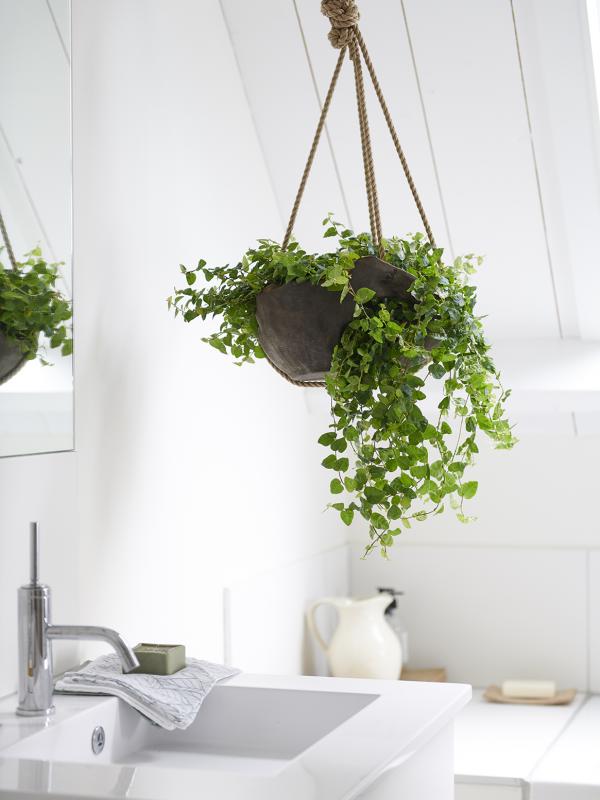With Ficus you might think of a whopper of a plant, but the climbing fig (scientific name: Ficus pumila) falls firmly into the category of ‘good things come in small packages'. Yet it can have a big visual impact: you can train the tendrils along a shape or allow them to climb across the wall like meandering small vines. The size and the growth habit also means that the climbing fig is a terrarium hit: it can climb out or create an exciting mini-jungle look.

Colours and shapes
The climbing fig has beautiful heart-shaped, often bumpy leaves with lovely markings. The plant is low-growing, but when the stems find something to climb against, they will. If there’s nothing to hold on to they will grow over the edge of the pot, giving you an attractive hanging plant. What’s particularly nice is that the plant evolves over its life: a young climbing fig has small leaves, whilst the leaves on a more mature plant are larger.
Origin
The climbing fig is a member of the mulberry family and grows in countries such as China, Japan and Vietnam. The vines there can scramble up trees to a height of up to 4 metres; the houseplant is considerably more modest in its size. Although it will happily climb up a staircase or wall to create a vertical indoor garden if that’s what you want. The scientific name Ficus pumila refers to the size: ‘pumilus’ means dwarf, and refers to the small leaves.
Symbolism
In China the white edge to the leaf is seen as a halo; it is said to be the good green spirit of the plant that drives away negative energy. That makes it an excellent housewarming plant or a thoughtful gift as a pick-you-up after a difficult time.





